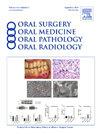Optimizing cone beam computed tomography (CBCT) protocol for visualization of thin bone
IF 2
3区 医学
Q2 DENTISTRY, ORAL SURGERY & MEDICINE
Oral Surgery Oral Medicine Oral Pathology Oral Radiology
Pub Date : 2025-02-04
DOI:10.1016/j.oooo.2024.11.066
引用次数: 0
Abstract
Background
Cone beam computed tomography (CBCT) has various dental applications, but discrepancies exist between direct measurements and measurements from CBCT images, particularly in assessing thin alveolar bone. Limited research has investigated the impact of CBCT scan protocols on measurement accuracy for thin bone.
Objectives
The objective of this study was to optimize CBCT scanning protocols for measuring thin alveolar bone.
Study Design
CBCT scans (Morita Accuitomo 170), were performed using different fields of view (4 × 4, 6 × 6 or 10 × 10 cm), voxel size (80 or 200 um), and acquisition time (17 or 30.8 seconds). Two reference holes per tooth were placed in 8 pig mandibles (32 teeth, 64 sites). Following protocol scanning, specimens underwent sectioning, decalcification, and staining. Bone width and height were measured from CBCT and histology slides at each site (buccal and lingual of each tooth). Two observers performed CBCT measurements independently. Histomorphometric measurements were determined by consensus among three observers and used as the gold standard. Agreement between measurements was assessed by Bland-Altman plots.
Results
After processing, only 37 viable sites remained. The mean measurement of bone width and height from histologic slides was 1.6 mm and 7.07 mm, respectively. The mean differences between all CBCT measurements and gold standard measurements ranged from 0.04 mm to 0.21 mm. The mean difference between CBCT protocols ranged from 0.005 mm to 0.10 mm. For CBCT measurements, the interobserver agreement was excellent (the intraclass correlation coefficient was 0.95).
Conclusion
We found that the differences between CBCT protocols were smaller than the differences between any CBCT and histomorphometric measurements. The mean differences between histological and CBCT measurements for different protocols were not clinically significant. We concluded that modifying CBCT scan protocols did not significantly impact the accuracy of CBCT scans.
求助全文
约1分钟内获得全文
求助全文
来源期刊

Oral Surgery Oral Medicine Oral Pathology Oral Radiology
DENTISTRY, ORAL SURGERY & MEDICINE-
CiteScore
3.80
自引率
6.90%
发文量
1217
审稿时长
2-4 weeks
期刊介绍:
Oral Surgery, Oral Medicine, Oral Pathology and Oral Radiology is required reading for anyone in the fields of oral surgery, oral medicine, oral pathology, oral radiology or advanced general practice dentistry. It is the only major dental journal that provides a practical and complete overview of the medical and surgical techniques of dental practice in four areas. Topics covered include such current issues as dental implants, treatment of HIV-infected patients, and evaluation and treatment of TMJ disorders. The official publication for nine societies, the Journal is recommended for initial purchase in the Brandon Hill study, Selected List of Books and Journals for the Small Medical Library.
 求助内容:
求助内容: 应助结果提醒方式:
应助结果提醒方式:


